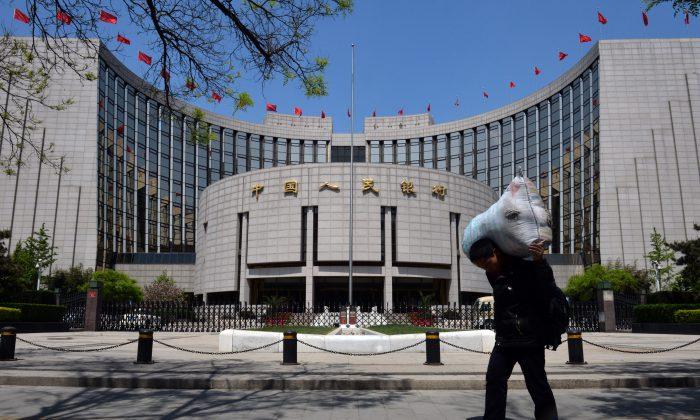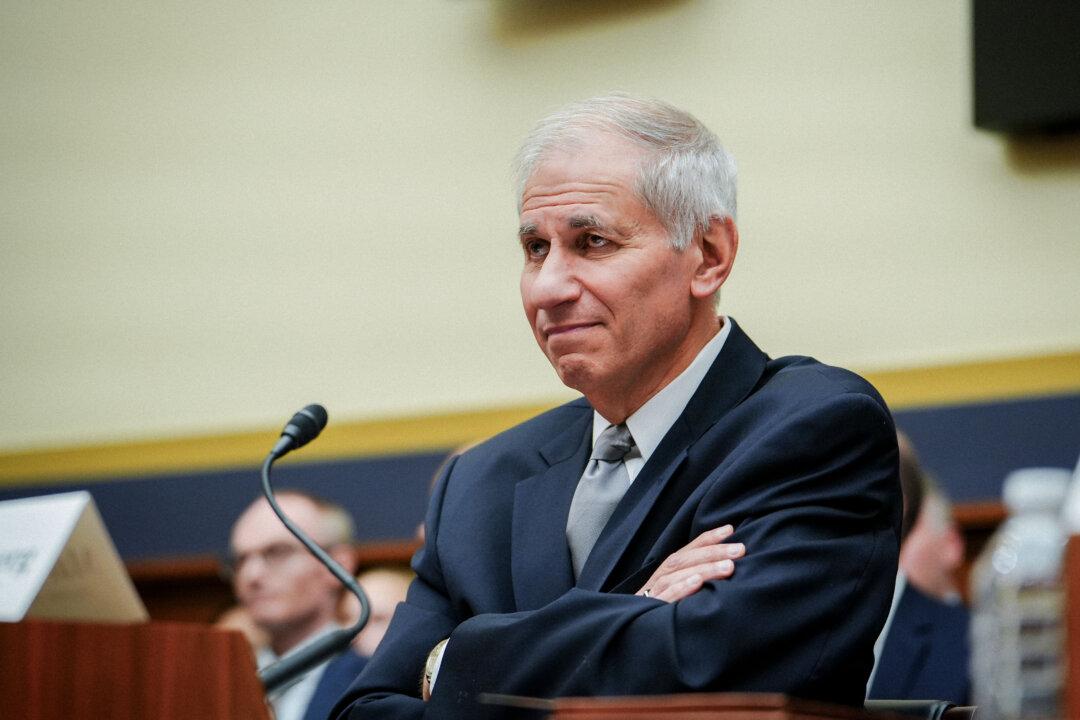The People’s Bank of China (PBOC) cut its one-year loan prime rate (LPR)—a benchmark for most household and business loans—by 10 basis points to 3.45 percent, falling short of the consensus estimate. This was the second rate cut in three months.
Officials left the five-year LPR—a peg for most mortgages—unchanged at 4.2 percent for the third consecutive month.
Most economists had anticipated a 15-basis-point reduction for both the one- and five-year LPRs, according to a recent Reuters poll. There have been growing concerns surrounding default risks in the besieged property sector, driven by intensifying liquidity troubles. Evergrande Group filed for U.S. bankruptcy protection, while Country Garden is on the cusp of default.
“The underwhelming LPR announcement strengthens our view that the PBOC is unlikely to embrace the much larger rates cuts that would be required to revive credit demand,” Julian Evans-Pritchard, head of China economics at Capital Economics, wrote in a research note on Aug. 21. “Hopes for a stimulus-led turnaround in economic activity largely depend on the prospect of greater fiscal support.”
Investors were also disappointed by the announcement. The Hang Seng Index finished the Aug. 21 trading session down by 1.82 percent, while the Shanghai Composite Index tumbled by 1.24 percent.
“Chinese banks’ decision to keep the 5-year rate steady is confusing for investors in the middle of a property crisis,” Ipek Ozkardeskaya, senior analyst at Swissquote Bank, wrote in a note. “The Hang Seng index sank further into a bear market, and the global risk sentiment is less than ideal as healthy economic data from the US, and darker clouds over China cast a shadow on both stock and bond markets.”
The central bank’s lack of significant action could be an indicator that policymakers will refrain from flexing their stimulus muscle to revive the world’s second-largest economy. The country has posted disappointing data in the post-pandemic recovery, with the second-quarter gross domestic product growth rate expanding less than expected, the market slipping into deflation, and consumer demand slowing.
The central bank noted that the nation’s economic recovery would be better described as a “zigzag” endeavor.
“Major financial institutions should take the initiative to act and increase loans, and large state-owned banks should continue to play a supporting role,” officials said in a statement. “We must pay attention to maintaining the pace of stable loan growth, properly guide credit fluctuations, and enhance the stability of financial support for the real economy.”
Mr. Evans-Pritchard suggests that even government intervention would result in a “modest” economic reacceleration.
Property Troubles
For the past two years, the property industry, representing about one-quarter of the economy, has been grappling with a mountain of challenges, triggering renewed contagion fears.Since 2021, firms accounting for more than one-third of home sales have defaulted, with most being private property developers. That’s left a trail of unfinished homes, unpaid creditors and suppliers, and offshore bonds trading for just pennies on the dollar.
This year, the real estate market has been trending downward, and that trajectory could weigh on a beleaguered sector and postpone the post-crisis recovery.

Although many property-related companies have collapsed, the two names that stand out the most are Evergrande and Country Garden.
Country Garden had once been considered a financially sound company. However, the enormous Chinese property developer missed two dollar-bond payments, drawing attention to the embattled firm’s fiscal situation. Country Garden’s debt totals more than $200 billion, posting losses north of $8 billion. It now plans to meet with creditors to discuss a proposal to spread out the redemption of a private bond worth $535 million over three years.
Country Garden was also given 30 days to make coupon payments it missed on Aug. 17 on two dollar-bond coupons worth $22.5 billion. The company also announced earlier this month that it suspended trading in 11 domestic bonds and anticipates recording half-year annualized losses of nearly $8 billion.
But experts note that it isn’t necessarily the company’s books that are spooking investors. The number of projects—there are roughly 3,000 housing projects nationwide—could prove to be an issue for the broader economy.
Evergrande is trying to avoid defaulting on $340 billion in debt, seeking Chapter 15 bankruptcy protection in a Manhattan court, a procedural move that prevents creditors from suing or tying up assets of non-U.S. firms in the United States. The company noted that it possesses more assets than debt but faced difficulty turning real estate into cash to repay creditors due to the slowing real estate sector.
“The application is a normal procedure for the offshore debt restructuring and does not involve (a) bankruptcy petition,” Evergrande said in an Aug. 18 filing.
A Threat to the Yuan
Authorities came to the Chinese yuan’s rescue last week as the currency has metastasized into another risk in the current economy.
The central bank’s decision comes soon after officials requested state-owned banks to bolster yuan interventions to mitigate yuan volatility. This could lead to another cut in the reserve requirement ratio (RRR), a portion of depositors’ balances that commercial banks are mandated to have on hand.
“We could also see a cut in FX reserve requirements, often considered as a tool to avert sharp CNY depreciation,” ING economists wrote.
In March, the PBOC trimmed the RRR for all banks, except financial institutions that have installed a 5 percent reserve ratio, by 25 basis points. The policy maneuver came three months after the central bank announced a cut to the RRR.
The offshore yuan has plunged by about 5 percent against the U.S. dollar this year.







